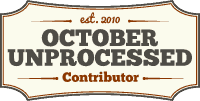
Replace your car horn with the "La Cucaracha" Air Horn! Five air trumpets play the most easily
recognized notes of the "La Cucaracha" song at the touch of a button,
getting instant attention with 118 decibels of power!
Can you sue someone for noise pollution? Each time the mysterious driver blasted "La Cucaracha" my Pavlovian response became more
rabid. Those abrasive, fingernails-on-chalkboard trumpet notes had ruined my relationship with a
once-charming song.
After hearing that horn for years, now it was especially grating since I
didn’t work in an office anymore. I was an aural prisoner in my own home for chrissakes. I told
my neighbor about my fury and she said, “Why don’t you find him and make peace
with it.” Hmmm, that was an idea. I would stake out this noise polluter so
I could put a face to the destroyer of classic Mexican folk songs. I mean "La
Cucaracha" wasn’t like that tinkly ice-cream truck song:
Oh little playmate, come
out and play with me
And bring your dolly three
Climb up my apple tree
Shout down my rain barrel
Slide down my cellar door
And we’ll be jolly friends forever
more
Who cares if you ruin that song. What do those corny, archaic lines even
mean? But "La Cucaracha?" The song about a cockroach who lost one of its
legs (thus the odd beat, representing a missing leg) that is rich with
historical significance and popularized during the Mexican Revolution?
La cu-ca-ra-cha,
la cu-ca-ra-cha
ya no pue-de ca-mi-nar
por-que no tie-ne,
por-que le fal-ta
u-na pa-ta de a-tras
So one day when I was taking a walk (with both legs intact), I saw a
vendor's truck with the back open that had fruit, chicharrones, chips, candy,
etc. I had seen it around the ‘hood for years but never paid it much mind. Then
it dawned on me. That's it—the object of my ire! So I went
up to the man in the back of the truck.
“Are you the one playing 'La Cucaracha?'" I said accusingly.
He nodded yes.
“It’s driving me crazy!"
I could see he didn't speak English.
"Loco!" I pointed to my head. "Loco!!"
But for as long as I had wanted to say that or something much worse,
pinpointing the perpetrator suddenly gave me pause. I realized that this
poor guy was just trying to make a living. Was driving this truck around all
day such a joyride? Could he even pay for his gas by selling a few mangoes and
a pack of Juicy Fruit gum?
“How does that horn work?” I said, trying to soften my wrath.
“Do you press one button and it plays the whole song or do you have to
press each note separately?” I asked, tossing out words like canción, accompanied by unhelpful
hand signals.
He motioned for me to follow him to the driver’s area and showed me the horn. He started to play it, and after the first two notes, I signaled he could
stop.
"Qué es tu nombre?" I asked.
"Pedro," he said.
"Gracias, Pedro," I said with a smile. "Adios."
I waved at him and was on my way.
As I was walking home, I realized that this horn was the poor guy’s
print ad, TV commercial, billboard and banner campaign. It’s all he had to tell the
world he had arrived as he drove spot to spot, parking for 10 minutes at a
time, day after day. Maybe the song drove him crazy too. Hell, he had to hear it almost as much as I did. Then I thought all I need to do is re-associate this song in my mind with someone who’s fighting the fight and doing the best he can—kind of like me, sans an abrasive theme song. So from now on, when I hear those trumpet notes
blasting across the ozone, I will think, “There goes Pedro. I hope he’s selling
a lot of fruit today. Never mind his air and noise pollution, wasteful oil consumption and pitiful carbon footprint."
Either way you look at it, I think it calls for a drink. Salúd!
 La Cucaracha Recipe
La Cucaracha Recipe
1 part tequila
1 part Kahlua
Serve over ice and enjoy.
A La Cucaracha is sometimes made with a third part triple
sec, brandy or rum and set aflame and served with two straws. Two people are to
drink it as quickly as possible before the straws melt. However I find that this fire- and BPA-free version does very nicely,
thank you.



































